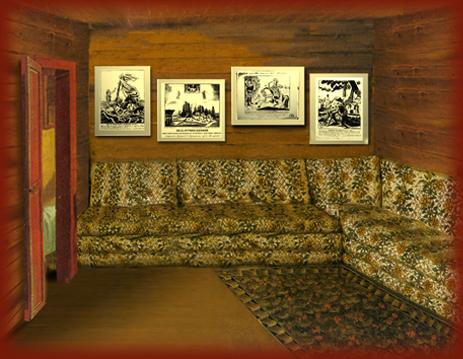Among the lubok of the first half of the XVIII century there could be found some works confronting - mostly in their subjects - professional engravings. But in general graphic art of the XVIII century stayed rather unified; essential changes took place only in the end of the century. At that time in the villages the artists began to cut wood engravings using the "true samples", adding more imagination and new interpretation to the original images. In the first half of the XIX century the social audience of the lubok changed. For urban citizens it gradually became more and more the entertainment; only in the countryside it kept on being taken seriously.
In the second half of the XIX - early XX centuries the lubok turned from the folk art and became more part of the new mass-culture - the art "for people".
The works represented here belong to the "serious" type of lubok, the mission of which is close to that of the icons and paintings - to decorate ("for beauty")"the churches, houses, chambers and vestibules". Wooden panels with "the images of suspicious and crazy inscriptions" together with contained in them "lie…neglecting the Holy History" were often criticised by the clerical censorship. The authorities did their best to prevent the circulation of the home-made religious engravings mostly because they were afraid of wide distribution of non-canon religious images. Indeed, it was the fight of the church with dissenting sedition and other heresies, which occasionally received a powerful media for propaganda of their ideas.
